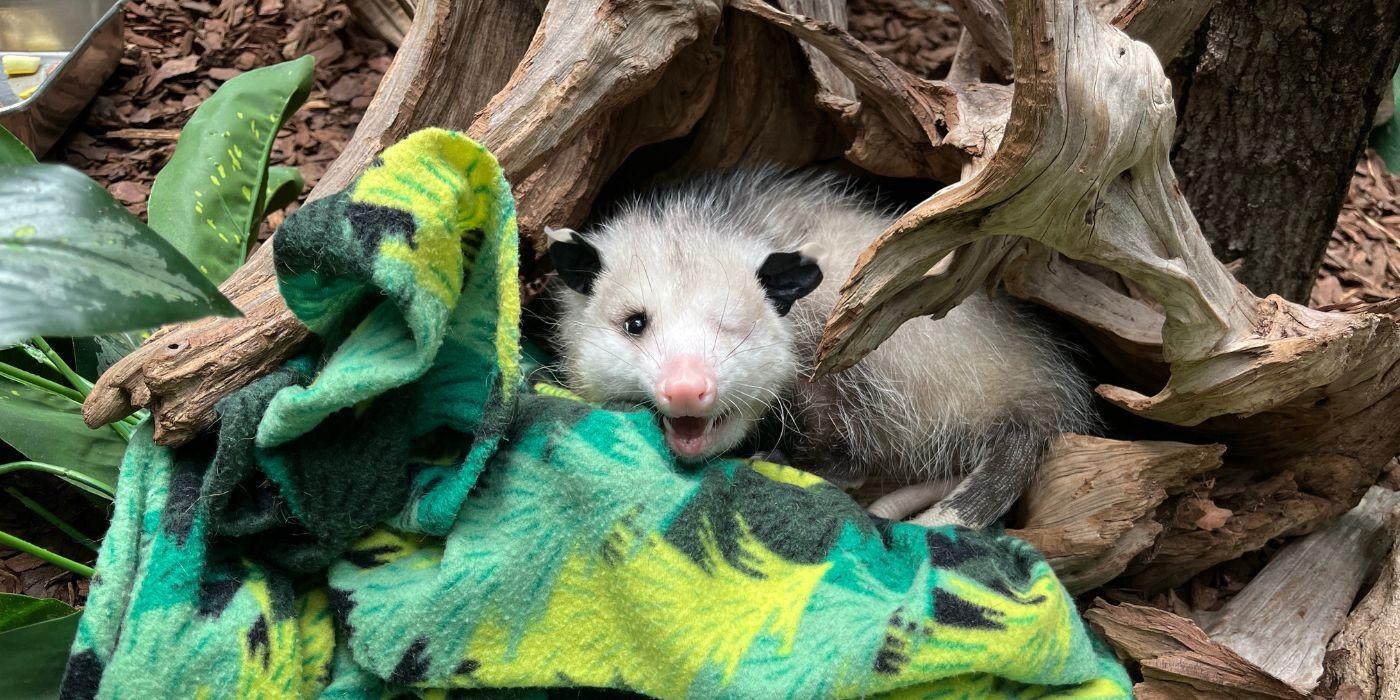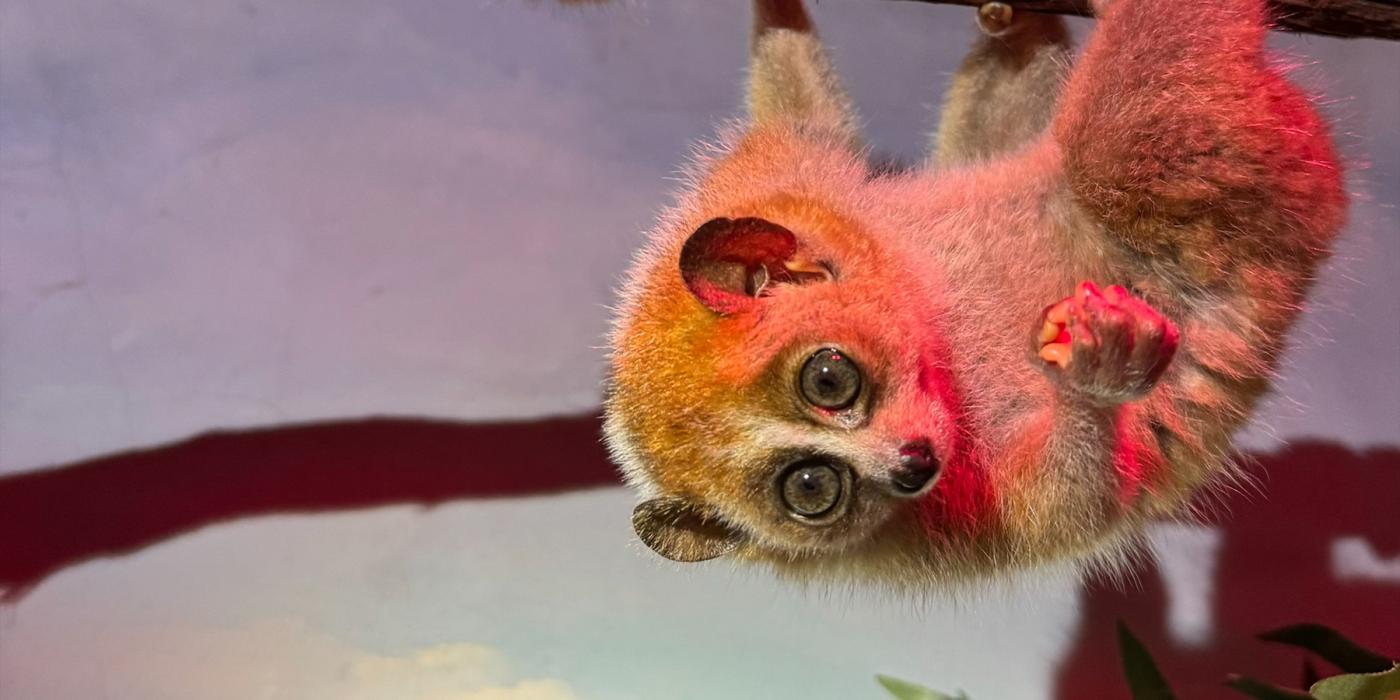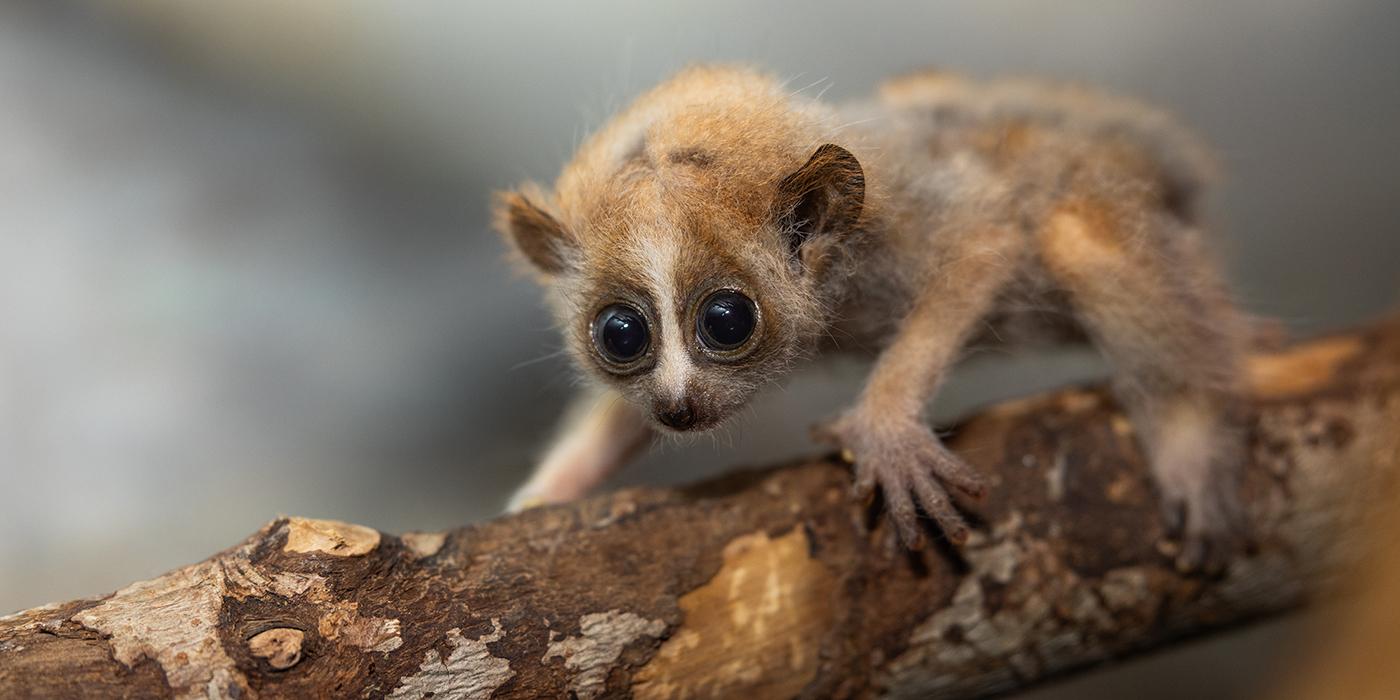New at the Zoo: Meet Our Skunk Brothers
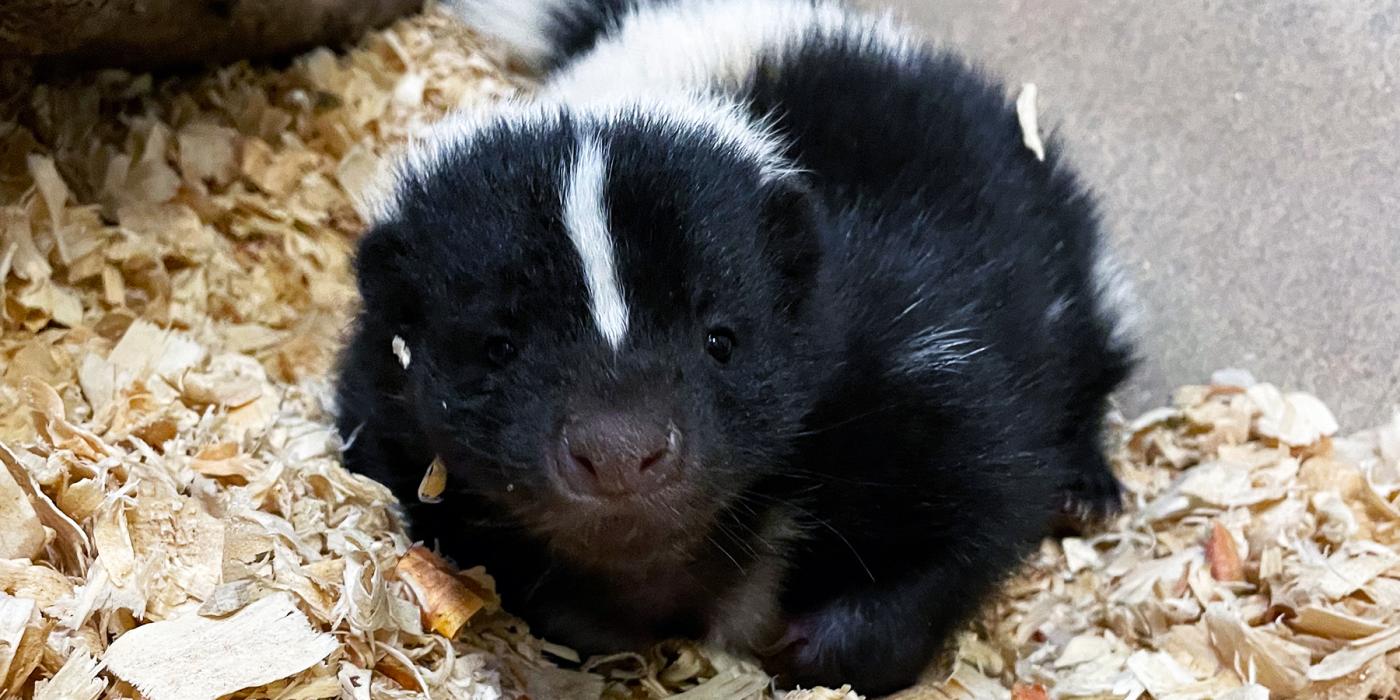
Their hobbies include eating, snuggling and snoozing. Follow your nose to the Small Mammal House and meet our new striped skunk brothers, Pigpen and Sauerkraut! The 8-month-old youngsters arrived at Smithsonian’s National Zoo and Conservation Biology Institute last October. Get to know their personalities in this Q+A with animal keeper Kara Ingraham.
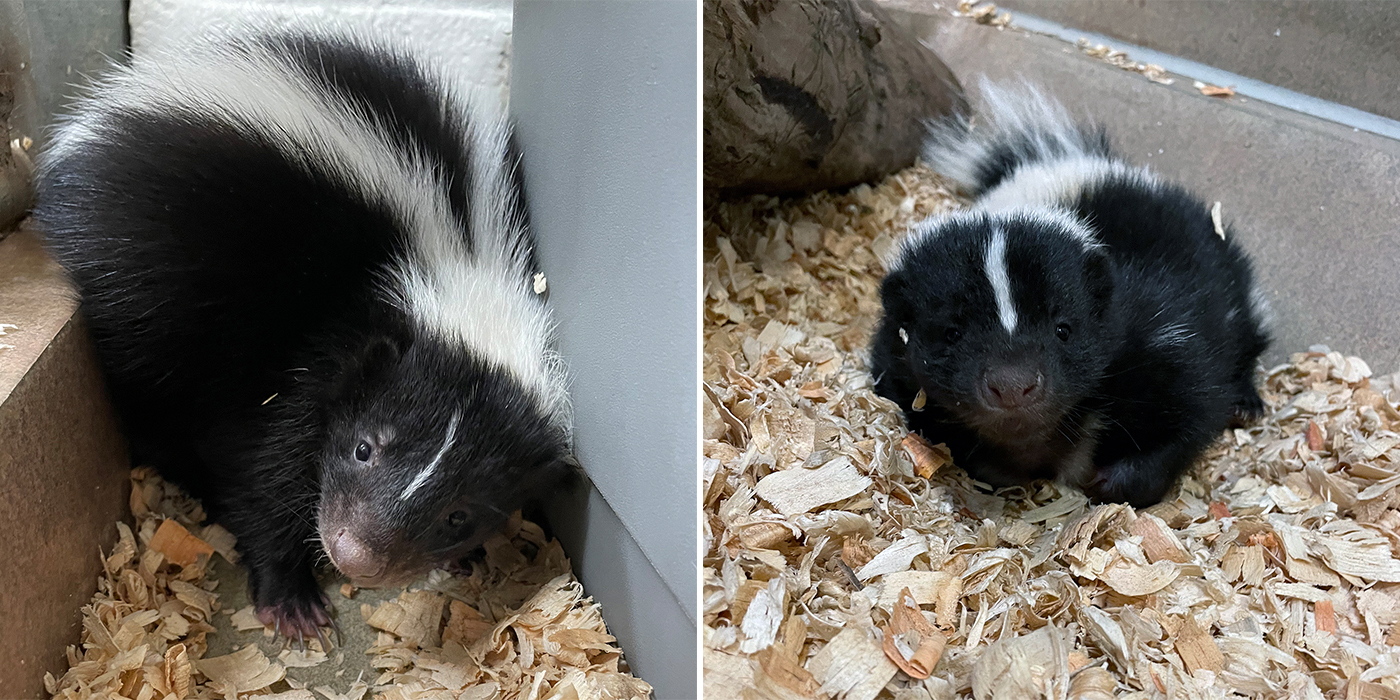
Meet our skunk brothers! Pigpen (left) is smaller and has a black tail. Sauerkraut (right) is larger and has a white tail and white spots on the outside of both back legs.
What is your favorite fact about skunks?
Skunks are well known for their defense mechanism; they can spray a foul-smelling fluid from glands near the base of their tail. The spray can travel over 10 feet and cause vomiting, nausea and burning in your eyes and nose.
People often have a fear of being sprayed by skunks. But the truth is, skunks would much rather run away than use their spray. Skunks are naturally shy animals, so the more space you give them, the less likely they are to spray. Adult skunks will try very hard to get you to leave by stomping their feet, “bluff charging,” and turning around to lift their tail and show you their glands before actually spraying.
Fall is the time of year where you (or your dog) are most at risk for being sprayed, as many juvenile skunks have separated from their mom and are still learning how to forage. They are more likely to be out during the daytime and tend to spray first and ask questions later!
What should I do if I’m sprayed by a skunk?
A common myth is that tomato juice can remove skunk smell, but it does not! There is nothing in tomatoes that counteracts the oily secretions of skunk spray. We recommend baking soda and dish soap mixed together. Be prepared that it might take a few rounds of scrubbing and rinsing with that mixture to remove the smell!
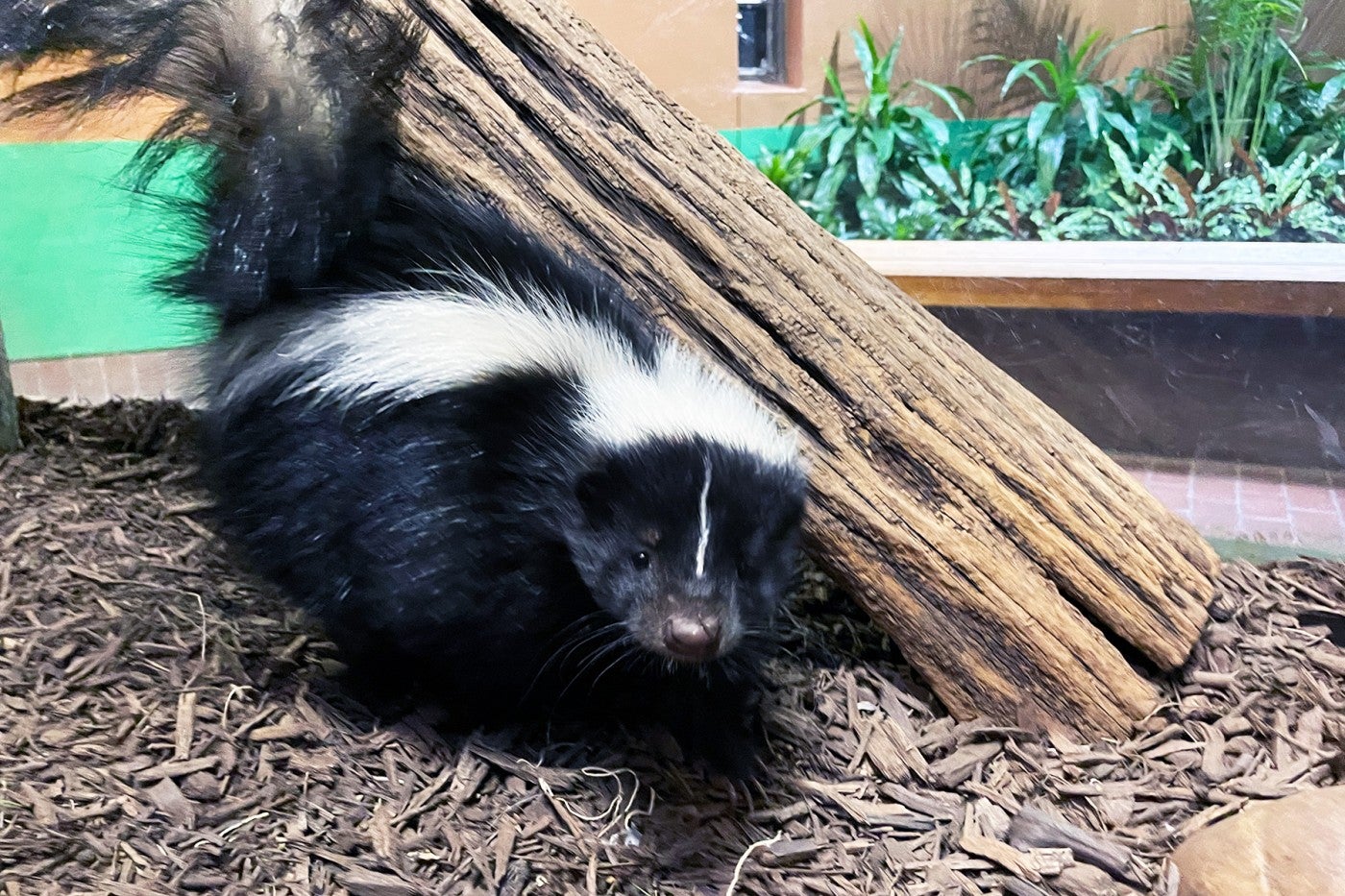
Do Pigpen and Sauerkraut spray?
Pigpen and Sauerkraut are de-scented – they have had their scent glands removed. So, it is safe for visitors to see them up close.
What are our skunks’ personalities like?
Pigpen is the more outgoing of the two and will readily approach keepers. He is very food-motivated and persistent when working on getting food out of enrichment items and puzzle feeders. Sauerkraut tends to hang back a bit more while Pigpen explores new things. He is cautious about keepers and changes in routine, but still very sweet and curious.
Both boys seem very relaxed with each other and are often found snuggling in their log or in the back hallway of their exhibit. They get along very well at the moment and like to eat together.
We’re not sure if they will be able to live together long term as adult males but we will watch them closely and let them tell us with their behavior if they need to be separated. Skunks are mostly solitary in the wild but can be kept in pairs or small groups under human care depending on their personalities.
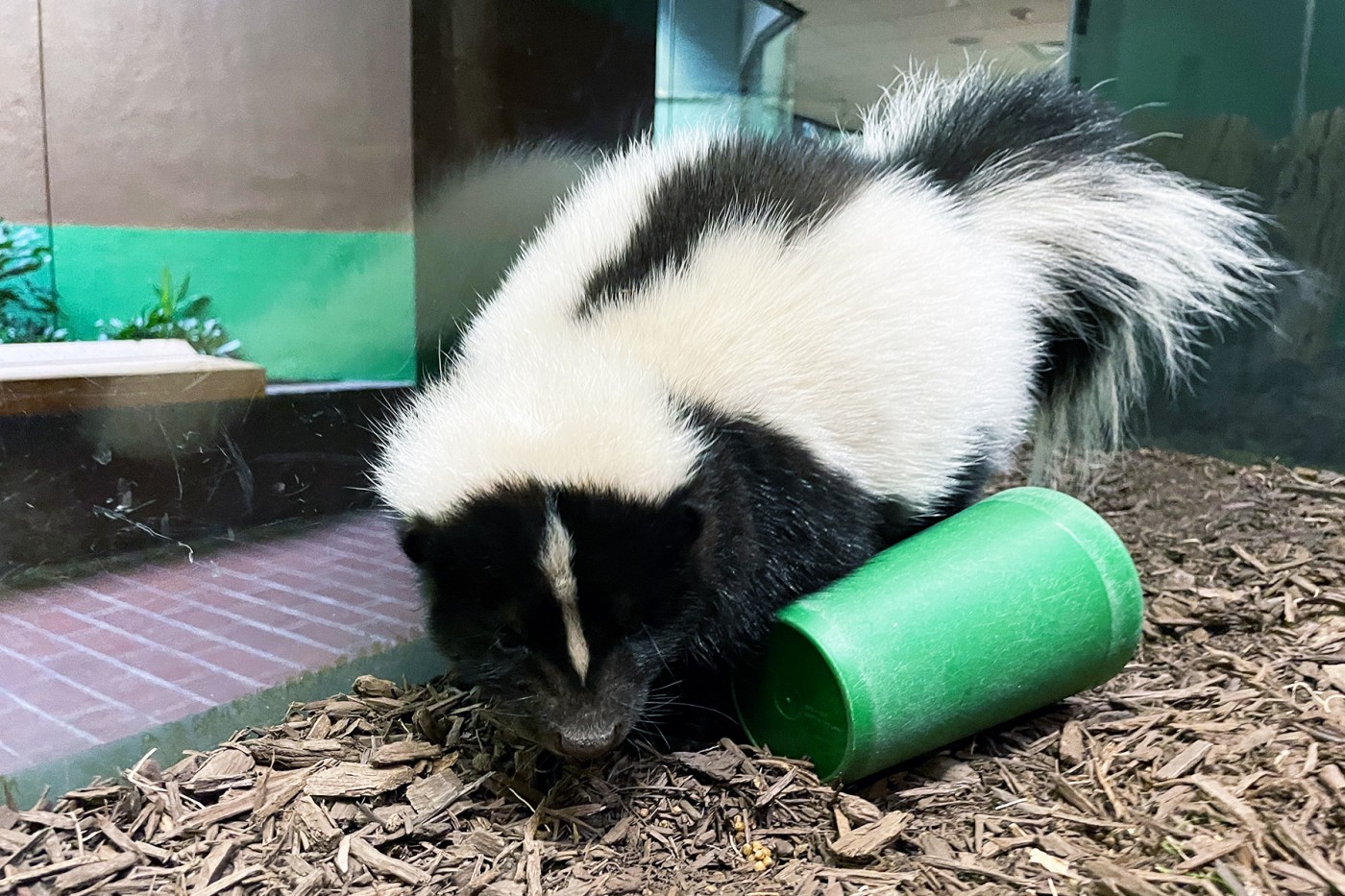
Do Pigpen and Sauerkraut have any favorite enrichment items?
Yes—anything that has food inside! They have also received dig boxes of substrate (ground cover) and colorful ball pits with worms inside.
They spend a lot of time with their enrichment and we feed them their whole diet inside enrichment items twice a day. Usually, they will go around to each enrichment item together rather than splitting up and each taking one. They are quickly mastering all of the different feeders and items we have here at the Small Mammal House.
What do skunks eat?
In the wild, they eat pretty much anything and everything. Their diet mostly consists of insects, eggs, small prey items, roots, berries and seeds. However, they will also go through your garbage and eat just about anything they can get their paws on!
At the Zoo, we feed them an insectivore kibble, fresh vegetables, apples, hard-boiled eggs and live bugs. The bugs, apples, sweet potato and corn kernels are their favorites!
What are you looking forward to most about working with Pigpen and Sauerkraut?
We are looking forward to building their trust and working more closely with them. Since they are still so young, they are pretty unsure about people. That said, they have made a lot of progress in the past few weeks. Now, they will approach us for food. We’re excited to continue to improve our relationships with them!
We are working on the basics of husbandry training with them, too. We start with handfeeding and trust building. Soon, we hope to work on target training, shifting (asking them to come into their holding area and have the door close behind them), crate training and scale training.
All of those behaviors will help them have more choice and control in their day and reduce stress for exhibit cleaning, weighing and medical procedures. We use their favorite items from their diet as a reward and either toss the food at their feet or use tongs to feed them directly.
What do you hope visitors take away from meeting our skunks?
Skunks are considered “backyard wildlife” but most people don’t have the opportunity (for good reason!) to see these animal neighbors up close. At the Zoo, they can do just that by meeting Pigpen and Sauerkraut and watching them go about their day. Visitors can gain an appreciation for these dynamic and adorable animals and learn more about the very important role they play in our ecosystem.
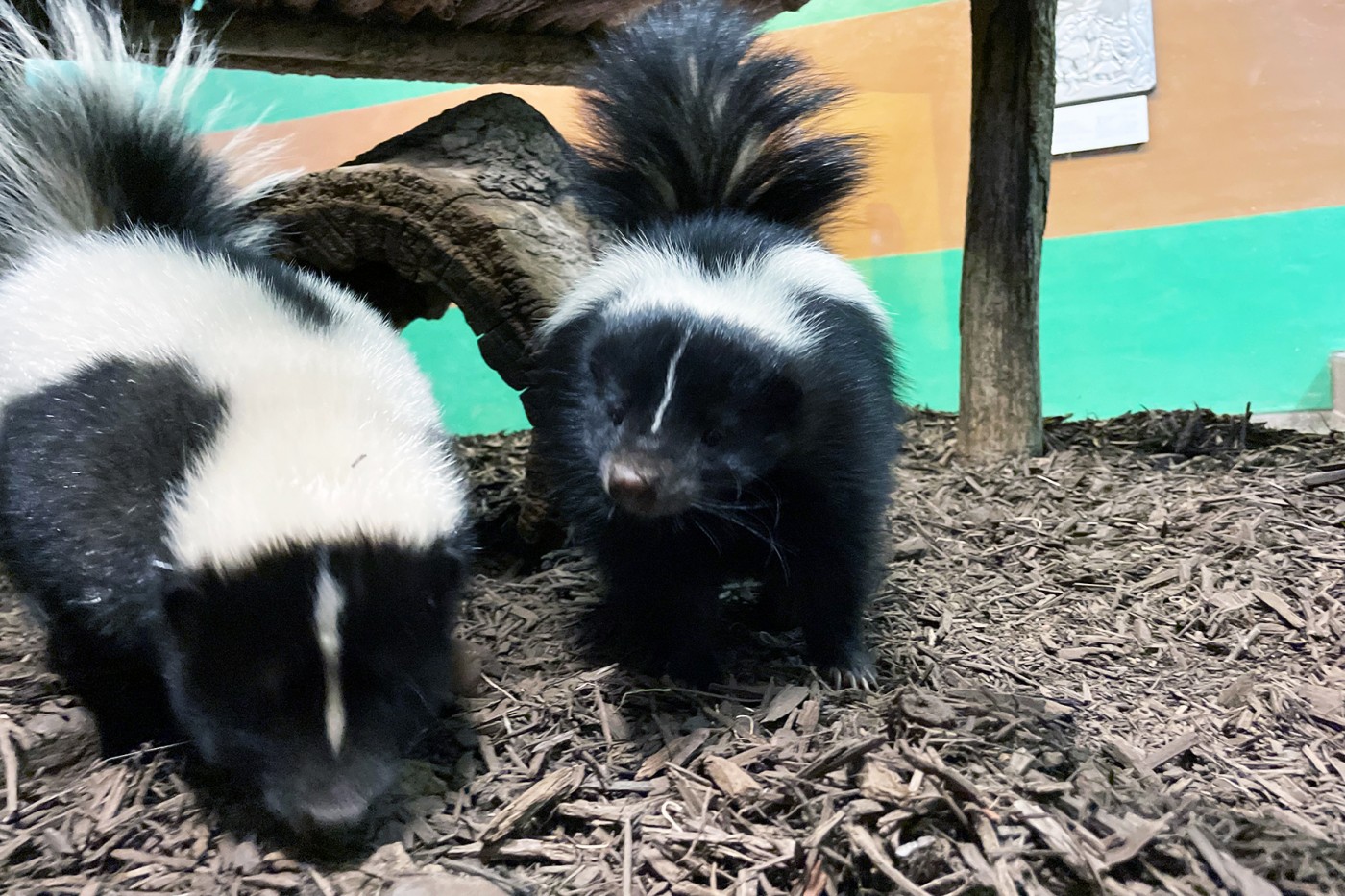
Got any tips for spotting Pigpen and Sauerkraut?
They are always on exhibit and are most active at feeding times, which occur between 9 and 10 a.m. and again from 1 to 3 p.m. Most other times, you will find them curled up napping. Their favorite spot to snooze seems to be in the back “hallway” of their habitat. Crouch down to see them!
I want to help skunks! What can I do?
Skunks have very poor eyesight and can’t see much other than basic shapes and movement. This makes roadways particularly dangerous for them because they can’t see which direction the car is coming from. If you are driving and see a skunk, slow way down and be prepared that they could dart in front of your car instead of running away. It’s not that they aren’t smart – they just can’t see where the car is!
Ensure all trash cans are covered, as skunks can easily become used to these food sources. If you encounter a skunk in your neighborhood or on your property, don’t try to remove it yourself. Skunks can carry rabies, and you should never attempt to handle one out in the wild. Instead, maintain a safe distance and call a licensed animal control professional.
We can all do our part to peacefully coexist with wildlife, including skunks. The trick is to maintain your distance and always observe them from afar. Skunks may be perceived as pesky at times, but they are not pests – they’re important members of our ecosystem!
Help friends and family understand why skunks are important by sharing what you’ve learned here. We hope that everyone who meets Pigpen and Sauerkraut gains an appreciation and respect for the animals that share our neighborhoods and local forests.
This story appears in the January 2023 issue of National Zoo News. Want to meet our skunks and other small mammals during your next Zoo visit? Check out the Daily Animal Demos schedule!
Related Species:

